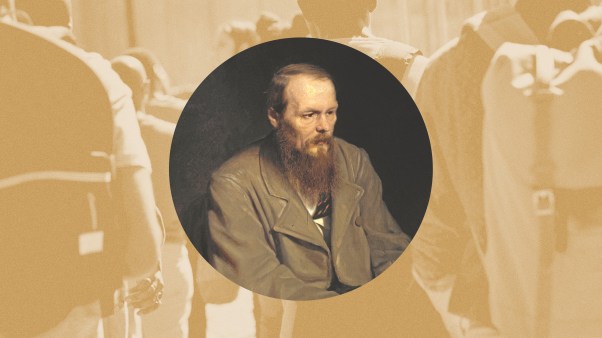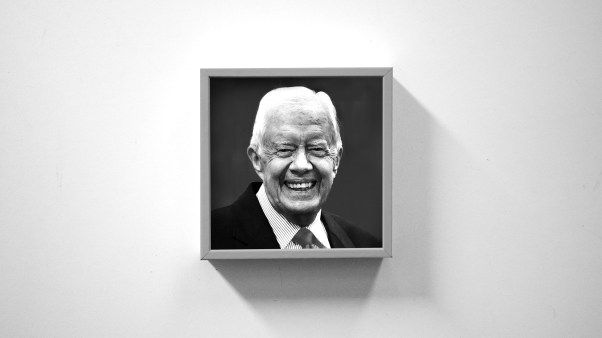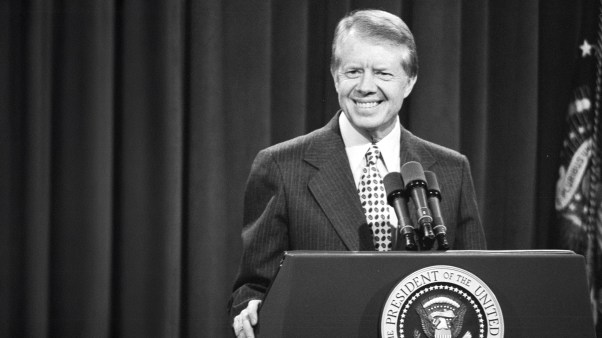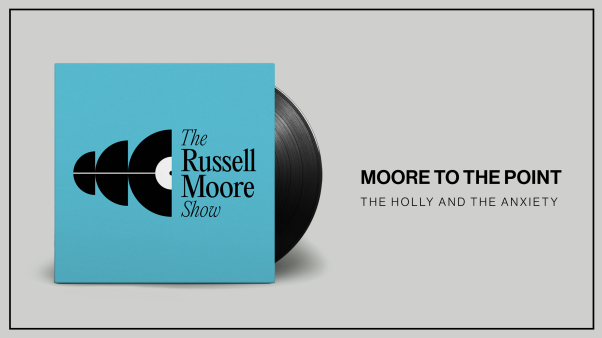History And The Christian Faith
Vindications: Essays on the Historical Basis of Christianity, edited by Anthony Hanson (Morehouse-Barlow, 1966, 192 pp., $5); The Historical Shape of Faith, by Ralph G. Wilburn (Westminster, 1966, 240 pp., $6); and Christ the Meaning of History, by Hendrikus Berkhof, translated by L. Buurman (John Knox, 1966, 224 pp., $5.50), are reviewed by John Frederick Jansen, professor of New Testament interpretation, Austin Presbyterian Theological Seminary, Austin, Texas.
Different as these books are in scope and approach, they express a common concern that the Christian faith must take history more seriously than some tendencies in modern theology have done.
Vindications is a symposium of six essays by five British authors. Three of the essays deal with the historical skepticism that characterizes form criticism of the Gospels. R. P. C. Hanson objects to the tendency to deny any genuine historical or biographical interest in the Gospels and seeks to show that “if nothing is certainly original, then we cannot be sure that anything is certainly secondary.” He points out that the time between Jesus and the writing of the Gospels is remarkably short for such a radical transformation of the message of Jesus as some posit. Anthony Hanson carries this critique further by examining Nineham’s commentary on Mark to show that his approach could discredit the reliability of any historical document. One may ask whether the comparison with other ancient literature does enough justice to the specifically confessional character of the Gospel. A. R. C. Leaney shows the most appreciation of form criticism as he deals with the quest of the historical Jesus in recent discussion. All three recognize the legitimacy and importance of the form-critical method but object that often conclusions are based less on form analysis than on prior presuppositions.
Ralph Wilburn’s The Historical Shape of Faith relates Christian concern for history to the development of the idea of history. He begins with the eschatological view of history as seen in the New Testament and in Augustine. The New Testament discussion is not very satisfying; it is much too brief and settles for rather sweeping generalizations. But Wilburn rightly shows how the eschatological view was challenged and undermined in the Enlightenment, and how rationalism’s “light of universal reason” failed to take history seriously. He gives a readable summary of the direction that the understanding of history has taken, paying particular attention to Croce, Toynbee, and Collingwood. The remaining chapters examine the implications for theology, especially for Christology and for the quest of the historical Jesus.
This is an interesting book. One wonders, however, why the jacket claims that it is “the first book to analyze just what history is, to define the impact of this modern idea of history on the Christian faith, and to consider ways in which theology must respond.…” The same publisher gave us Alan Richardson’s History, Sacred and Profane in 1964, a book that receives no mention in the present volume and yet is, in my opinion, a more substantial work.
The last book is Hendrikus Berkhof’s Christ the Meaning of History (written in 1958). An apocalyptic era, he suggests, calls the Church urgently to a theology of history. But church dogmatics has too much left a theology of history to the sects. Berkhof proposes to appropriate the message of biblical theology, including biblical apocalyptic, for an answer to the threatening alternatives of wrong meaning and no meaning in history. Since Israel first saw history genuinely as goal-directed, he examines the significant Old Testament traditions from the Exodus faith through Daniel, criticizing the manner in which prophecy and apocalyptic are often set over against each other. The New Testament portrays Jesus Christ as both the End and the Beginning of history. That is why “consistent” and “realized” eschatology are complementary expressions of this End and Beginning, both in the life of Jesus and in the life of the Church. The new beginning is seen in the missionary endeavor of the early Church. Berkhof examines modern secularization and says: “Secularization is the child of the gospel, but a child who sooner or later rises against his mother. And yet, the mother would not be what she ought to be if she did not desire the child.”
The most important chapters portray the Crucified and the Risen Christ in history. Here Berkhof deals with New Testament apocalyptic, including such thorny questions as the future of Israel and the millennial hope. Finally, he deals with the Consummation, both as break and as connection with past and present history. Eternity is not “timelessness”—or else there is only break and no consummation of history. Yet Berkhof does not follow Cullmann’s tendency to minimize the break between time and eternity. In his conclusion, avoiding historical skepticism and predictive confidence, he points to the practical necessity of making relative decisions in the present. An epilogue, written in 1965, indicates that Berkhof remains opposed to the basic conceptions of the Bultmann school.
These three volumes show that Christian theology need not settle for an uncritical biblicism or a historical skepticism that is indifferent to historical foundations of the faith. Of the three, I found Berkhof’s the most rewarding.
Reading for Perspective
CHRISTIANITY TODAY’S REVIEW EDITORS CALL ATTENTION TO THESE NEW TITLES:
• Reformed Dogmatics, by Herman Hoeksema (Reformed Free Publishing, $14.95). A systematic treatment of biblical and Reformed theology, thirty years in preparation, that develops the traditional topics of theology, anthropology, Christology, soteriology, ecclesiology, and eschatology.
• Ancient Orient and Old Testament, by K. A. Kitchen (Inter-Varsity, $3.95). A British scholar applies ancient Near East data to problems of Old Testament chronology, history, and literary criticism and calls for a critical reassessment of widely held liberal theories and methods.
• Ring of Truth: A Translator’s Testimony, by J. B. Phillips (Macmillan, $2.95). The renowned biblical translator relates discoveries of the deep truths of God that have gripped his life during his long years of study.
Death-Of-Reader Theology
The Future of Belief: Theism in a World Come of Age, by Leslie Dewart (Herder and Herder, 1966, 223 pp., $4.95), is reviewed by David A. Redding, writer in residence, Tarkio College, Tarkio, Missouri.
The argument over how many angels can dance on the head of a pin is nothing to our intricate theological needlework. The diversionary literature defining the death of God and refining the new morality grows more and more complicated and voluminous. Our debate has become so rarefied that it would have bewildered Dionysius the Areopagite. Surely it will amuse the next generation, with the brutally practical reaction it is sure to have.
The Future of Belief is a book about the author’s God. Mr. Dewart’s desire to release God from the prison of the past only means that He is to be incarcerated in a more effective one. The author adds his form of atheism to that of the Marxist and that of the death-of-God theologian. But in this book the reader dies before God does.
At times Dewart with his erudition sounds a little like Emily Post describing the proper way to extract a prune pit. Take this, for example:
But is it possible to transcend the conceptual dichotomy of God’s essence and existence?… If we depart from Greek metaphysics at their Parmenidean root, knowledge is no longer an immaterial “intrussusception” of reality, and the investigation of being is no longer guided by the equivalence of intelligibility and being.
These “come of age” theologians complain that all Christian expression that preceded them is adolescent and irrelevant. In a very knowing and humorless way, Dewart rushes into this thin air to deal with “the problems of integrating Christian belief with the everyday experience of contemporary man.” I had high hopes for this author, having just put down the most exciting book I’ve read in years by another Roman Catholic. But Dewart continues the rage of carrying religion off into a corner where only the very special coterie can look at it. The book is brilliant inside its own logic but far remote from contemporary man’s “everyday experience.”
Dewart does fluff up some issues on which theology has been sitting for ages. And he can be incisive: “Belief must bear upon the reality of God, not upon words or concepts.” “The Marxist counterpart is the rejection of the God who is truly that of the Christian faith, but who in fact is unfaithfully believed in by us.” The author offers a shakeup more illegible than mistaken, undisciplined rather than deadly. But, not content with knocking out windows, he goes on to knock out walls and leaves us no house at all. As he discusses such matters as the distinction between the essence and the existence of God, the atheistic and anti-theistic positions, and the possibility that God may or may not be a being, one suspects that he is not in the realm of The Future of Belief but in fantasy.
Books of this kind do not belong to prophecy, nor are they organic additions to Christian theology. The death-of-God mood is a revolt that rejects most ungratefully the past wisdom and genius of all those who have transmitted Christianity to us. This new conceit suffers under the illusion that we are smarter than the apostles and that Augustine and Luther are only adequate corollary reading for good secondary schools. Now, borne on the wings of modern enlightenment, we shall bravely free our lofty insights from the drag of yesterday. Such an attitude is that of a defensive teenager tooting his own horn, howling with reproof, rife with objection toward the masterpieces of the past. Having emerged so recently from two wars and trembling now within the shadow of another, how can we pontificate with such authority?
Do not the angels sing for Mr. Dewart? We shall wait for him to put his articulate pen to work on what Christ meant when he said, “Except ye … become as little children, ye shall not enter into the kingdom of heaven.”
Dissecting 007
James Bond’s World of Values, by Lycurgus M. Starkey, Jr. (Abingdon, 1966, 96 pp., $1.45); and The Devil with James Bond, by Ann S. Boyd (John Knox, 1966, 123 pp., $1.75), are reviewed by Clyde S. Kilby, professor of English, Wheaton College, Wheaton, Illinois.
Dr. Starkey and Mrs. Boyd hold diametrical opinions on the work of Ian Fleming. Starkey believes that Fleming, through his hero, James Bond, glorifies sex, sadism, violence, snobbery, “gambling, guzzling, sports-car gunning, and gourmandising,” and a narrow nationalism. Mrs. Boyd proposes that Bond is in reality “a modern knight of faith whose adventures involve a gallery of modern demons who have been attacking contemporary mankind just as diabolically as Medusa and all the other legendary demons and dragons attacked mankind in ages past.” She thinks that Bond is indeed another St. George going about to slay the demons in contemporary society.
I do not find myself in much sympathy with either book. Starkey’s is not at all a study of Fleming and therefore has a completely unjustified title. Rather, it is a series of sermons against the evils he finds approved by Fleming’s hero. The sermons, which Dr. Starkey delivered over NBC television, are earnest, informative, and excellent in expression. They take Fleming, however, simply as a point of departure.
On the other hand, Mrs. Boyd makes a thorough examination, from her own point of view, of Fleming’s books. Her clever hypothesis is so intriguingly presented and so undogmatic that I think it might be palatable even to one as opposed as Dr. Starkey. She concedes that her view is “a little preposterous,” but she carries through on it so well that it becomes interesting for its own sake.
This is not to say that Mrs. Boyd is simply toying with her reader. She insists that the reading of all the Fleming novels in their chronological order will show the reasonableness of her argument. The spirit that has been missing in Western civilization, says she, is that of the image of St. George the dragon-slayer, an image that for generations captured the imagination of youth and benefited them. James Bond has such an image, says Mrs. Boyd, as partially proved by the fact that his novels have sold 45 million copies and sent 100 million people to see the movie versions. (Although both books were printed in 1966, Dr. Starkey reports only 18 million copies sold. It seems too bad that errors of this sort are allowed to pass both writer and editor.)
The thing that impresses me most about Mrs. Boyd’s book is not that she proves her point but the astonishingly wide backdrop against which she tries to prove it. She makes use of a large array of distinguished authority, particularly Kierkegaard and Bonhoeffer. Although she sometimes marshals her material with strength, one often senses little more than ingenuity at work. I think she might have done better to forget Bond and use her insight and skill to try to show the need today of another St. George. There is indeed such a need.
I felt that I should not write this review without first reading one of Fleming’s stories. At random I picked up Dr. No. I discovered no St. George but only a salad of mystery entertainment, with a tart dressing of sex. On the whole, it seemed to be a very contrived performance. But then, Mrs. Boyd insists one must read not just one book but all. I did inquire of a James Bond fan (a Christian) and was told that the truth is probably halfway between Dr. Starkey and Mrs. Boyd. That is, Fleming, like many other popular writers today, dishes out lots of violence, drinking, and sex. At the same time his overcoming hero can become for some readers, a model—like Batman—of bravery and endurance.
Catalyst For Christian Writers
The Pilgrim’s Progress and Traditions in Puritan Meditation, by U. Milo Kaufmann (Yale University, 1966, 263 pp., $6.50), is reviewed by John S. Ramsey, graduate student, University of Maryland, College Park.
The Protestant spirit, here and in England, has never been especially charitable toward imaginative literature; but in seventeenth-century England, the Puritan wing of the Reformation permitted the creative writer as little room for the practice of his art as the Tudor monarchs allowed the Puritan for the exercise of his religion. Yet within this heritage so inimical to the creative imagination, Puritanism discovered its most original genius and its most enduring work of art: John Bunyan and The Pilgrim’s Progress.
U. Milo Kaufmann’s The Pilgrim’s Progress and Traditions in Puritan Meditation is a scholarly and penetrating analysis, marred only occasionally by its once having been a doctoral dissertation. It supplies a readable account of the theological forces within Puritanism antagonistic to imaginative literature, and it offers a convincing explanation for the artistic excellence of The Pilgrim’s Progress in spite of those forces. Indeed, Kaufmann suggests how the very restrictions of Puritanism upon the activity of the imagination defined a territory that Bunyan could imaginatively explore.
Significant in Kaufmann’s book is the fact that both in the Puritan reverence for the Bible as the sole authority for faith and conduct and in the corollary emphasis on the use of the Scriptures only for the discovery of doctrine, the creative writer’s imaginative devices were denied validity: His use of symbol, image and metaphor was not appreciated by his readers, since these literary devices communicated ambiguous suggestion rather than clear, unspotted doctrine. The Puritan spirit thus inhibited the poetic sensibility. And this inhibition reveals in part why modern Puritanism—call it orthodoxy or evangelical conservatism—has produced so few great writers, and perhaps no writers of the stature of those who have fashioned from their antipathy to the Puritan spirit a creative stimulus.
But Bunyan, Kaufmann shows, found his imaginative freedom for The Pilgrim’s Progress within the narrow boundaries of Puritan meditation, a discipline that urged the believer to reflect upon the Word (an exercise of making and preaching a Puritan sermon to oneself) and to meditate both upon heaven (a locus for infinite imaginative opportunity) and upon his experience (a process using memory and imagination in which the truth of the Scriptures was attested). Within these limits Bunyan’s imagination operated freely, as shown, for example, in his description of Christian’s sojourn at House Beautiful.
Moreover, Kaufmann’s demonstration of the importance of meditative traditions in Bunyan’s art places The Pilgrim’s Progress within the larger artistic context described by Louis Martz in his seminal works on this subject—The Poetry of Meditation and more recently The Paradise Within. Martz argues that much of the seventeenth-century religious poetry (which, incidentally, has been a major influence on a good deal of modern literature) was not ecstatic lyricism; rather, it was a poetry shaped by the rigorous formulas of medieval and Tridentine spiritual exercise.
The tradition of meditation, then, which seems to be a factor of artistic excellence in seventeenth-century English literature, is, according to Kaufmann, not exclusively the province of Donne and Milton, Herbert and Crashaw. Bunyan is there, too; his style, structure, and content prove it. Furthermore, Kaufmann’s study—and Martz’s studies, too—reveals that in the genre of meditative art, the best writers refused to oppose their antecedents; rather, they found in them a discipline for their art. The Pilgrim’s Progress and Traditions in Puritan Meditation is perhaps the catalyst needed by the aspiring writer suffering within the restrictions of contemporary, orthodox Protestantism.
Book Briefs
The Mercersburg Theology, edited by James Hastings Nichols (Oxford, 1966, 384 pp., $7.50). Selections from the writings of John Williamson Nevin and Philip Schaff, nineteenth-century German Reformed Church leaders whose ecumenical theology stressed sacramentalism.
Pioneers in Mission, edited by R. Pierce Beaver (Eerdmans, 1966, 291 pp., $6.95). A Christian missions scholar amasses an abundance of ordination sermons, charges, and instructions that shed light on early American missions to the heathen.
Christ’s Parables Today, by George K. Bowers (Beacon Hill, 1966, 139 pp., $1.95). Unravels some of the enigmas of Jesus’ parables about the King, his kingdom, his subjects.
Peloubet’s Select Notes 1967, by Wilbur M. Smith (W. A. Wilde, 1966, 436 pp., $3.25).










